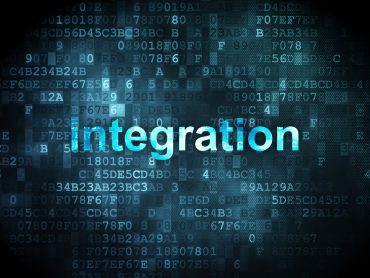
ISO has agreed to initiate the Graph Query Language (GQL) language project. It’s the first new query language blessed by ISO since they blessed the original SQL standard more than 30 years ago.
My aunt Marilyn Bohl was a pioneer throughout her career in technology. She was the first Product Manager for Database 2 (known today as DB2) at IBM. Later on, she served as Vice President of Ingres Corporation, one of the early and more innovative relational databases. She started sharing stories from her career with me as a teenager that I’ve come to understand and appreciate more as I’ve pursued my own career in and around data management and databases.
While everyone knows of Structured Query Language (SQL) as the lingua franca of relational databases today, this wasn’t always the case. In fact, in the early days of relational databases, there was a competing query language standard known as QUEL. Originally developed by database mastermind Michael Stonebraker, QUEL was another way to express relational queries that many felt had some technical advantages over SQL.
What I learned from Marilyn years ago was that eventually, SQL won out as the International Organization for Standardization (ISO) blessed, more popular alternative. She explained how market convergence around the SQL standard was a catalyst in the explosion in the popularity of SQL databases throughout the ’80s and ’90s. My, how far we’ve come.
The Time Is Now for Graph Databases
The graph database market has reached critical mass and maturity. Multiple vendors now offer various flavors of graph or graph-like solutions, and graph databases have experienced significant commercial adoption in leading companies around the globe. The simple fact that Gartner highlighted graphs as a key technology trend for 2019 is proof the industry has passed enough milestones to be considered mainstream. What’s more, the growth in popularity of graph databases as tracked by db-engines.com shows that users agree.
To date, standards have been scarce in the graph space. openCypher, Apache TinkerPop, and Gremlin have represented the closest examples of multi-vendor standards for querying graphs. And while de facto standards are useful, they still don’t give users, buyers, practitioners, or vendors the full confidence that comes from a durable, vendor-independent de jure standard.
An Historic Moment in the Database Market
On Tuesday, September 17, 2019, the ISO agreed to initiate the Graph Query Language (GQL) language project, based on a proposal developed through years of work by organizations including Oracle, SAP, Cambridge Semantics, Redis, and others.
Make no mistake: This is a very big deal, not just for graph databases but for the database market overall. It’s the first new query language blessed by ISO since they blessed the original SQL standard more than 30 years ago.
Practitioners Win
The GQL standard benefits graph application developers, opening up more market opportunity:
- Skills reusability: Every software developer has to learn a “throwaway” skill at some point, which might be an obscure technology or a dying language dictated by a project. But GQL won’t be a throwaway skill. In two years, GQL will be the dominant query language for graph databases. It will become a marketable and transferrable skill developers can use in the future, even if the next project or employer uses a different graph database than what he/she previously learned on.
- Market demand for skills: UpWork’s most recent quarterly survey showed the Top 20 fastest-growing requested skills, which include Microsoft Azure and even relational databases. Supported by the GQL standard, the market will grow faster with more graph work to be done. Moreover, using GQL skills across many different platforms will not only help the market grow faster but move it forward.
Buyers Win
If you’ve ever deployed a graph database or are thinking about it, this is great news for you. While actual definition and adoption of the GQL standard will play out over the coming years, it provides a number of benefits for buyers:
- Application portability: While standards never guarantee 100% portability across platforms, they still improve portability significantly, meaning that a buyer can move their application from one graph database to another with far less refactoring and redevelopment.
- Reduced vendor lock-in: Because standards-based applications reduce switching costs, buyers have a lot more choices for where and how they run their applications. Buyers also won’t run the risk of being locked into a vendor with a proprietary language where the only “escape hatch” is to rewrite the application from scratch.
- Skills availability: Especially in the enterprise, buyers know you need skills to get the most out of technology investments. Standards like GQL enable a large ecosystem of skilled practitioners to flourish, making it easier for buyers to hire employees or consultants who can deliver powerful graph-based applications.
Vendors Win
Beyond the obvious fact that a faster-growing graph database market benefits vendors, there are important secondary benefits that come from language standardization – the biggest being innovation.
Rather than having a dozen vendors attempting to make small innovations in their own query languages, vendors can adopt a standard language and focus R&D efforts on differentiation that ultimately delivers more value for each individual vendor’s customers.
Towards a Standards-Based Future
Creating a query language standard won’t happen overnight. While the primary ingredients of the standard are known, the standard itself still has to be developed and then implemented by vendors.
In the meantime, if you want to get skilled up on graph languages, check out openCypher as you’ll learn concepts and likely even some syntax that you’ll see down the road as part of the GQL standard.





























